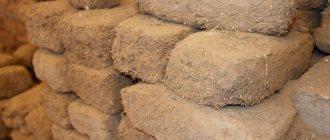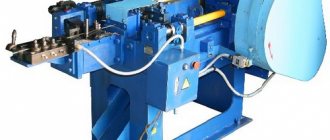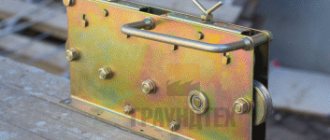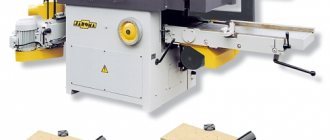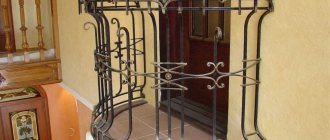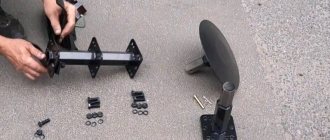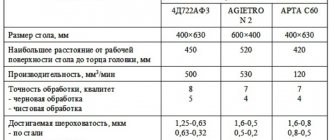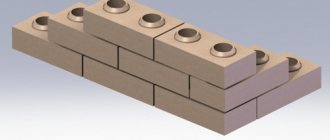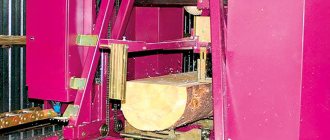Business relevance
Despite the crisis, the pace of construction in our country continues to increase in both the private and public sectors. Along with them, the popularity of building materials is growing. It is known that almost no construction is carried out without bricks, among which Lego can be called in demand.
A business idea to open an enterprise for its production can lead to the construction of a successful and quickly profitable enterprise, giving high profits, since there are still few competitors in this niche. By properly planning your activities, you can find your niche in the construction market and increase production turnover.
Advantages of Lego bricks
Lego brick as a business has a wide range of advantages:
- the popularity of this building material is associated with its design features - it looks like familiar toy bricks, has grooves and guides, making it possible to lay stones without developed skills and even without cement;
- as a consequence of the previous point, the dynamics of sales of Lego bricks is steadily growing;
- due to the novelty of production technology, there is now little competition in the market;
- general demand for bricks;
- stability of demand for products;
- great business prospects;
- no need for large financial investments to open production.
Lego bricks are made not from clay, but from a concrete mixture, thanks to this, not only are kilns not needed, but the raw materials will be much cheaper.
Thus, the production and sale of Lego bricks is an excellent opportunity for an entrepreneur to start a business that is not particularly difficult to implement and will definitely recoup all costs if done correctly.
Basic properties of the material
Lego brick is a high-quality facing material formed by hyper-pressing without firing. Outwardly, it is similar to a not little-known designer. This form makes the erected structures much stronger, and the masonry process simple and accessible to everyone. The peculiarity of using Lego bricks is their fixation thanks to a special adhesive mass (15 kg of such glue is enough for 1 m³ of brick). The use of standard mortars and cement is not allowed. The channels that are obtained through the holes of the materials can be used as highways for infrastructure nodes. Each brick has two holes protruding above the surface. During laying, the lower one is attached to the upper one. The result is a smooth surface that does not need to be plastered.
DIY machine
On the Internet, there are many drawings available for various models of machines for making Lego, like this one.
Before starting work, study the drawings of the production machine, watch the video and prepare the necessary tools. You will need:
- Sheet of steel;
- Channel;
- Metal pipes for the piston, pipe for the handle;
- Corner;
- Accessory bolts and nuts;
- Welding installation;
- Bulgarian;
- Sandpaper;
- Dye.
Sequence of work:
- The stands for the machine are made of two channels approximately 1 meter long. The size of the brick produced will depend on the selected width of the cylinder.
- We connect two channels with blanks in the form of two steel rectangles, thus forming a section.
- We weld a channel on top of the resulting rack to create a running gear for the bunker. On one side, we weld a stop made of reinforcement. The channel will serve as a rail. We cut a hole in it according to the dimensions of the original cylinder.
- The bunker is welded from steel sheets according to the drawing. The dimensions of the hopper must correspond to the dimensions of the mold. The hopper is installed on a metal sheath, which is in the form of strips. It should move freely along the upper channel.
- The piston system is welded from metal sheets in the form of a rectangle, at the base of which two pipes are installed.
- To close and open the hopper lid, we make a handle from a pipe. It must be bolted to the hinge.
More details can be found in the video.
https://youtube.com/watch?v=6vgoIwctuQw
Technological production process
The main raw materials are:
- Filler (the filler can be sand or a mixture of sand, slag or limestone);
- Binder (the main binder remains cement, the amount per 1 brick is 10-20 percent);
- Water (it is better to take purified demineralized water so that white stripes do not appear on the brick);
- Dyes (a variety of dyes are added to give a suitable color, has a purely decorative purpose).
The smaller the filler parts, the better the final product. Lego bricks are also made from clay. Take 9 parts clay to 3-4 parts Portland cement, mix and add 1 part water.
To understand the manufacturing technology, let’s consider what sequence is used:
- The dry mixture is poured into the hopper, it is thoroughly mixed in advance;
- After the bunker, the mixture passes through a dispenser, in which the required amount of mixture for one brick is separated;
- The dispenser pours the mixture into the matrix, where the pressing process begins;
- After pressing, a finished building material is obtained. It is placed on pallets and sent to a warehouse for further drying. The brick must dry for at least 20 days before it gains strength. The instructions for some units indicate the drying time for the brick.
Additional components
To simplify the work on the machine for the production of Lego bricks, many components are sold on the market. Among them:
- Additional molds (matrices) of various types, shapes and sizes. With their help, you can change the linear dimensions of the brick, as well as give it different decorative styles.
- Conveyor feeders. To automatically feed the dry mixture into the bunker, you can purchase a tape. They can deliver bulk mixture to a height; the cost of the belts starts from 90,000 rubles.
- For large production volumes, you can purchase a dry mixture mixing unit. It will make the work much easier.
In addition to the above, you will need pallets for storing finished bricks, shovels, buckets, empty containers, brushes for washing equipment.
Purchasing a machine for making Lego bricks or making them yourself can be an excellent business. Or a good way to save on bricks. Such a machine can be installed at a construction site and produce your own bricks at the site of use. The cost of Lego bricks is quite low compared to ordinary bricks purchased on the market.
In addition to the article, we are posting a video about the materials that are used to make Lego bricks on a machine:
Raw materials
To produce this material, environmentally friendly substances are used. All components are widely used and available. There is no exact recipe for preparing raw materials - the ratio of ingredients depends on the required density and quality. One of the mixture composition options:
- filler – screening of crushed limestone (up to 90%);
- binder – cement (7-15%);
- water (up to 5%);
- plasticizers;
- dyes.
Video - composition of light brick concrete mixture:
What assortment to offer consumers?
Whatever manual press for Lego bricks you choose, it will be equipped with special dies. And it is these matrices that will determine what shape, what size and what type of finished products will be produced.
The matrix for Lego bricks will allow the entrepreneur to offer consumers a full range of manufactured blocks. By replacing molds on the machine, the following types of products can be obtained:
- Standard brick. This is the most popular type of all possible. And the sale of machines today is mainly carried out specifically for such bricks. Even if there is no extra money to purchase additional matrices, blocks of standard shape must be present in the assortment.
- Brick fitting. The dimensions of Lego bricks here are exactly the same, only they can be connected to each other by the side parts, and not just the top and bottom.
- Rail-shaped brick. Such blocks are laid like rails. Among professional builders, such Lego bricks are quite in demand. Therefore, if you want to enter a large market with your products, you must definitely acquire such matrices.
The price of the matrix is quite high - 25,000-50,000 rubles. But it is quite justified, taking into account the technology of their manufacture and the raw materials used (high-quality hardened steel 54-65 HRC)
And when ordering this “part” from a supplier, it is important to know what types of matrices there are:
- Simple. Such matrices are intended for making bricks individually. This is the simplest option, affordable for many.
- Combined. The dimensions of the matrix in this case are designed for the simultaneous production of 2-3 bricks
- Original. Such matrices are made to order according to individual measurements. It makes sense to purchase such “templates” only when there is a specific order for a specific brick. And there is absolutely no need to keep such matrices in reserve - a waste of money.
When deciding where to buy matrices for Lego bricks, it is worth considering that you need to choose them especially carefully. In order to last as long as possible, they must meet all quality standards. Otherwise, even a couple of technological cycles of the matrix will not last.
Financial part
To calculate costs, we use approximate calculation data:
- personnel – 2 employees;
- working hours – 20 days a month for 8 hours;
- wage fund – 40 thousand rubles. per month;
- electricity for production – 1600 kW/hour;
- purchased equipment – 600,000 rubles.
Price for material and resources:
- cement M500 - 5 rubles/kg;
- screening – 0.6 rub./kg;
- electricity – 3.76 rubles.
The information provided in this article is only a brief introduction to the essence of the business. If you decide to move on to implementation, then you need to download a professional business plan for a brick factory with detailed calculations:
Profit calculation: In one shift you can produce 1,600 pieces of brick, in a month - 32,000 pieces. The cost of the finished product is approximately 12 rubles. Income with 100% sales of products will be 448,000 rubles.
To produce one Lego Creep, you need approximately 350 grams. cement (1.6 rub.), 3 kg. screenings (1.8 rubles), plasticizer and dye - 0.3 rubles, as well as 1.25 rubles. allocated for wages and 0.2 rub. for electricity. Other expenses (taxes, transport) – 0.75 rubles. The cost of one brick will be 6 rubles.
Net profit per month: (12 – 6) * 32,000 = 192,000 rubles.
Thus, the payback period of the project will be about four months.
DIY Lego brick. Brief overview of equipment and manufacturing technology
Before you think about organizing production, you need to accurately weigh the pros and cons, including cost and cost data in the analysis. The first and main thing you need to understand is the scale and organization of the technological process. Brick making is not a garage-sized job. This process is large-scale, requires large production areas and precise logistics for the supply of materials and delivery of finished products. This is if we are talking about business.
If you make Lego bricks for yourself, you need to calculate the profitability of this idea based on the volume of your construction and the cost of production at the construction site.
According to standard technology for making Lego bricks, the following composition and proportions of the mixture are recommended:
- Sand – 10%
- Crushed stone screening – 70%
- Cement M500 – 20%
Cost of materials :
- Sand – 520 rub/t
- Elimination – 185 rub/t
- Cement – 175 rub/bag
Consumption and estimated cost per 1 ton of mixture
- Sand – 52 rub.
- Elimination – 130 rub.
- Cement – 700 rub.
1 ton of mixture produces 285 bricks. Costs for purchasing materials – 882 rubles. The cost of one unit is 3 rubles 09 kopecks. The number of finished Lego bricks per shift is from 900 to 4000 pieces in 8 hours (depending on the power of the machine).
The price does not take into account:
- Possibility of purchasing unpackaged cement, which is significantly cheaper
- The cost of plasticizer, they vary in consumption and efficiency. This needs to be analyzed separately.
- Cost of transport services for delivery of materials
- Workers' salaries
- Equipment depreciation and maintenance
- Cost of electricity if the press is not manual
Equipment for the production of Lego bricks is presented in a wide range on the Russian market. The simplest and cheapest solution to the problem is a manual molding press and a small concrete mixer. The cost of this device will be around 45-65 thousand rubles. Of course, you can’t count on significant production volumes in manual mode; here we are talking about 500-800 pieces per shift when working intensively with a partner.
The obvious advantages of manual equipment are low cost, compactness, mobility and the possibility of simultaneous use. For example, if you have a manual machine for producing Lego bricks on your farm, you can provide yourself with briquettes for heating from wood sawdust.
The cost of the equipment directly depends on the force produced by the press and the amount of automation that speeds up the production process. Also, the higher this indicator, the better the quality of the products. The cost of such equipment starts from 200 thousand rubles for a simple hydraulic press with a productivity of 1,500 pieces per shift and reaches 7-8 million for complete lines with an output of up to 10,000 products per shift.
Semi-automatic machine
Serious manufacturers offer services for calculating and drawing up a business plan for such production, develop mixture recipes based on local conditions, and provide technical support to the manufacturer at all stages of operation.
Automatic equipment with high productivity
The point of this article is not limited to advertising of individual manufacturers and does not provide a 100% solution to get rich quick. Here we tried to formalize an idea, a dream direction for a person with an active lifestyle. Reviews on numerous forums are also not the ultimate truth; here you can easily fall into advertising techniques that sometimes do not provide real information.
The main thing is to show persistence, common sense and determination, and the rest will follow and will definitely work out.
Business registration
At the first stage of implementing the idea, it is enough to register your activities as an individual entrepreneur. This form requires a minimum package of documents:
- application in form P21001;
- receipt of payment of state duty (800 rubles);
- copy of the passport.
Then you should choose the form of taxation. The most profitable option in this case will be a simplified system (15% of profit or 6% of revenue). To start working immediately on the simplified tax system, at the time of registration, add to your package of documents an application for the transition to a simplified taxation system in form No. 26.2-1.
It will take 5 working days to complete all permitting documentation.
If you are planning large-scale production at the start, it is better to register as a limited liability company.
Features of masonry
Laying Lego bricks has its own specific nuances. The first row is fixed to the base using a cement-sand mixture, and all subsequent rows are laid with glue. For these purposes, adhesive intended for ceramic tiles is usually used.
When laid, it should have the consistency of fairly liquid sour cream. Consumption is 22-25 kg per 500 bricks. It is best to apply the mixture using a special glue gun.
Laying is carried out in the following order.
Laying the first row
The quality of the entire structure depends on the quality of laying the first row. To do this, the surface line and horizontal row are clearly controlled.
The first row is laid on the foundation, the surface of which is previously covered with insulation and waterproofing using cement mortar. Between the bricks at the ends, adhesion is ensured by a thin layer of glue.
All elements are joined so that the elements of the next row engage in the locking engagement, taking into account the displacement by half the brick. The compaction is ensured by a mallet.
Subsequent masonry
The glue is applied using a glue gun to the bottom of the brick with a zigzag roller 10-12 mm wide. First of all, the engagement pins are covered with glue.
Glue is also applied to the end of the element. Each layer is laid with binding, i.e. with an offset of exactly half a brick. The tenon is aligned with the groove and, with a little effort, is firmly driven into it.
Formation of openings
A Lego brick can itself become a floor beam, which eliminates the need to install a reinforced concrete element that distorts the masonry. The opening is made as follows:
- formwork is installed;
- one row of Lego bricks is laid, in which longitudinal channels are infiltrated and steel reinforcement is laid;
- 2 more rows of bricks are laid on glue;
- Concrete is poured into the holes.
We recommend: Which plaster is better - gypsum or cement? Which one to choose for leveling the walls?
After the solution hardens, a fairly strong overlap is formed.
Making an armored belt
To attach the roof to the wall, a reinforced belt is made from Lego bricks, which evenly redistributes the load.
To do this, the last row of the wall is laid out of brick with ready-made longitudinal grooves. They contain parallel steel reinforcement. Wooden plugs are inserted into the holes in the brick and a layer of concrete is poured around the entire perimeter of the structure.
We recommend reading: When is a monolithic belt used to strengthen walls?
Equipment
To start working, it is enough to purchase a machine (hyperpress), an industrial mixer and other things - molds (matrices), pallets, shovels, etc. The cost of equipment for brick production depends on productivity:
- machines with low productivity up to 1000 pieces per shift (manual or low power) - 90-300 thousand rubles;
- middle class - about 2000 bricks per shift, price from 350 thousand rubles;
- industrial equipment or a mini plant make it possible to produce more than 750 pieces per hour, but the cost is high - from 2 million rubles.
The brick machine consists of the following parts:
- bunker for bulk materials;
- dispenser;
- matrix for forming Lego bricks;
- pump;
- press;
- bed;
- electric motor (not available in manual units).
Video - budget machine for light brick:
Lego brick production technology
The Lego brick production technology includes several stages. The dry mixture is supplied to a special bunker. Using a dispenser, a strictly established volume of the mixture is sent to a special chamber, which will become the basis for a new brick. A matrix is installed in the chamber, on which the number of bricks created after pressure treatment depends. In general, the design may vary depending on the manufacturer.
During high pressure treatment, the mixture is “sintered” with water and cement. This method is called “cold welding”. After opening the press, the platform with the products installed on it moves up. The worker gets the opportunity to use the finished brick, as well as place it directly on a pallet to ensure further steaming or drying. The resulting Lego brick must be left in a warehouse for several days so that it gains strength. The drying time depends on the type of machine, the composition of the mixture, and the dimensions of the product.
Additionally, to organize a high-performance mini-factory, you will need a mixer to reduce the cost of producing Lego bricks. When purchasing a ready-made mixture, the consumables are significantly higher than when making it yourself. The mixer must have durable blades, and their number must be at least 4. In addition, you will need a transport tape, through which the mixture will be delivered to the bunker. At the initial stage, you can reduce costs by loading manually, but this will require quite a lot of labor.
Advice. Most machines require a small number of operating personnel. In many cases, just one person can handle the entire job. To increase productivity, you will need to attract two or three workers. One can be put to work with the machine, the rest to control the supply of the mixture, filling the hopper, etc.
It’s worth getting pallets in advance for placing lots of Lego bricks. To fill the raw materials, you will need shovels that are resistant to abrasives. When the coating wears off and particles get into the mixer, a technological problem may arise, due to which defects will appear in the Lego brick caused by changes in the chemical composition. Special brushes are useful for cleaning equipment between production cycles.
At home
Making Lego bricks at home is beneficial in two cases - a lack of funds to purchase professional equipment or a desire to save on the purchase of building materials for your home.
In this case, you can purchase a manual machine for making bricks. Its cost varies within 40 thousand rubles. It does not consume electricity and can be transported in a regular car trailer. The scheme of its action is to prepare the mixture in a special matrix form. Manual mode is used. The machine has a loading hopper and a dosing unit. Small dimensions make it possible to work in a garage or small room and make bricks with your own hands. Video - Idea for a business in a garage. Making Lego bricks with your own hands:
Advantages of a homemade machine
A homemade brick machine allows you to save several times on the purchase of building materials. It’s entirely possible to make bricks yourself; you don’t need any special skills to do this.
The mixture for making bricks can be purchased at a specialized store at an affordable price, or you can make it yourself from scrap materials.
A large budget reserve is not needed either to purchase the mixture or to purchase the components that will be required for the machine.
The main advantages of a do-it-yourself brick machine:
- low cost;
- the ability to independently customize molding;
- small dimensions: while purchased machines require a working area of about 10 square meters, a homemade brick machine can accommodate 5-6;
- quick assembly (purchasing metal and making the machine yourself will take no more than a day, but you will have to wait much longer for delivery of the finished machine).
For comparison: the cost of finished devices with an electric drive starts from 80 thousand rubles. Moreover, models with minimal performance indicators are considered.
If you purchase manual machines, their price will be slightly lower, but still too high for the average person: on average it is 40-45 thousand rubles.
Required materials and tools
First, you need to select the optimal drawing of the machine that suits you in terms of dimensions and the total amount of materials for manufacturing.
The fewer there are, the more budget-friendly the device. However, it should be remembered that when the dimensions are reduced, the productivity of the homemade brick machine also decreases.
You will need the following tools:
- welding machine;
- sandpaper;
- angle grinder.
Materials for an average DIY brick machine:
- channel 5 mm thick, 10 cm wide;
- two pipes with a cross section of 5 cm and 9 cm for the lever and piston, respectively;
- steel sheet 3 mm thick;
- fastening elements;
- primer (optional), coloring composition.
The exact length/footage of materials should be calculated according to the drawing.
Manufacturing algorithm
For the support frame, you need to make 2 meter-high posts from channel bars. They are connected by a crossbar.
First of all, the running element of the hopper with a limiter is welded onto the support. You need to make a hole in the sheet in which the piston will fit.
Next, a bunker is created. It is welded from parts of a steel sheet and attached in such a way that the container runs along the upper channel.
A lid must be provided so that the hopper can be opened and the batch of bricks removed. It will require a handle.
The final stage of the design is the creation of the piston. It is created from a rectangular strip of sheet metal and reinforced with ribs for rigidity.
In order for a home-made brick machine to serve for a long time without failing due to corrosion, it should be cleaned, sanded, coated with a metal primer and a paint composition.
Features of application
It should be understood that bricks made independently by hand cannot be used to build load-bearing walls.
Using them for the construction of residential buildings, especially those with two floors or higher, is hazardous to health.
It is recommended to use homemade building materials for the following purposes:
- installation of fencing;
- creation of ovens, barbecue devices;
- decorative finishing of the interior and summer cottage;
- laying out country paths, beds;
- construction of small technical buildings: woodsheds, one-story sheds.
The device will definitely be useful to owners of a summer cottage or land for permanent residence, but those who were planning to use the material to build their own house will be disappointed.
The limitation on the use of homemade bricks is related to the pressure characteristics.
For electric devices, the hydraulic load on the mixture during the manufacture of each brick is at least 5 tons.
In order for the material to be used for the construction of load-bearing walls, it is necessary that the pressure exerted on it during molding be in the region of 20 tons.
With manual machines, due to the fact that the press operates on human energy, the maximum pressure is 2 tons.
If desired, brick can still be used in residential construction, but at the same time wisely.
For example, it is suitable for external cladding of a window, creating an additional decorative layer on top of an already reinforced load-bearing wall.
However, such bricks cannot act as the basis of the entire structure.
Video review of machine manufacturing step by step
A step-by-step diagram where the step-by-step assembly of a homemade machine for the production of bricks is clearly and clearly outlined.
How to work?
If the equipment for the production of building materials was purchased at a construction store, then it comes with a remote control for controlling the work. Manual cutting machines for making bricks must be controlled independently. First, the required volume of raw materials is loaded into the mixer. It is transported into the matrix. Then, under the influence of vibrations, all materials are leveled. The punch creates the mold for the product. The machine can cut bricks. Next, the materials fall onto the pallet, and from there into the steaming chamber. This is where they gain strength. If there is no such camera, then the sources are simply unloaded into the sun and left for 24 hours. Next, you can resort to sawing with a hacksaw. For strengthening, hyperpressing is used, which is based on the water-cooled welding method.
How to implement lego-kiprichi
The success of your sales depends on the quality of your advertising. This process also requires spending money, but the relationship here is directly proportional: the more money invested in the event, the more people will learn about your production.
You can promote your products in the following ways:
- use elements of outdoor advertising: notice boards, billboards, city lights, etc.;
- open your own online store;
- place advertisements and publications in construction newspapers and magazines;
- attend construction exhibitions and seminars.
This is the price of promoting your production and forming a customer base.
